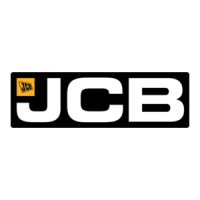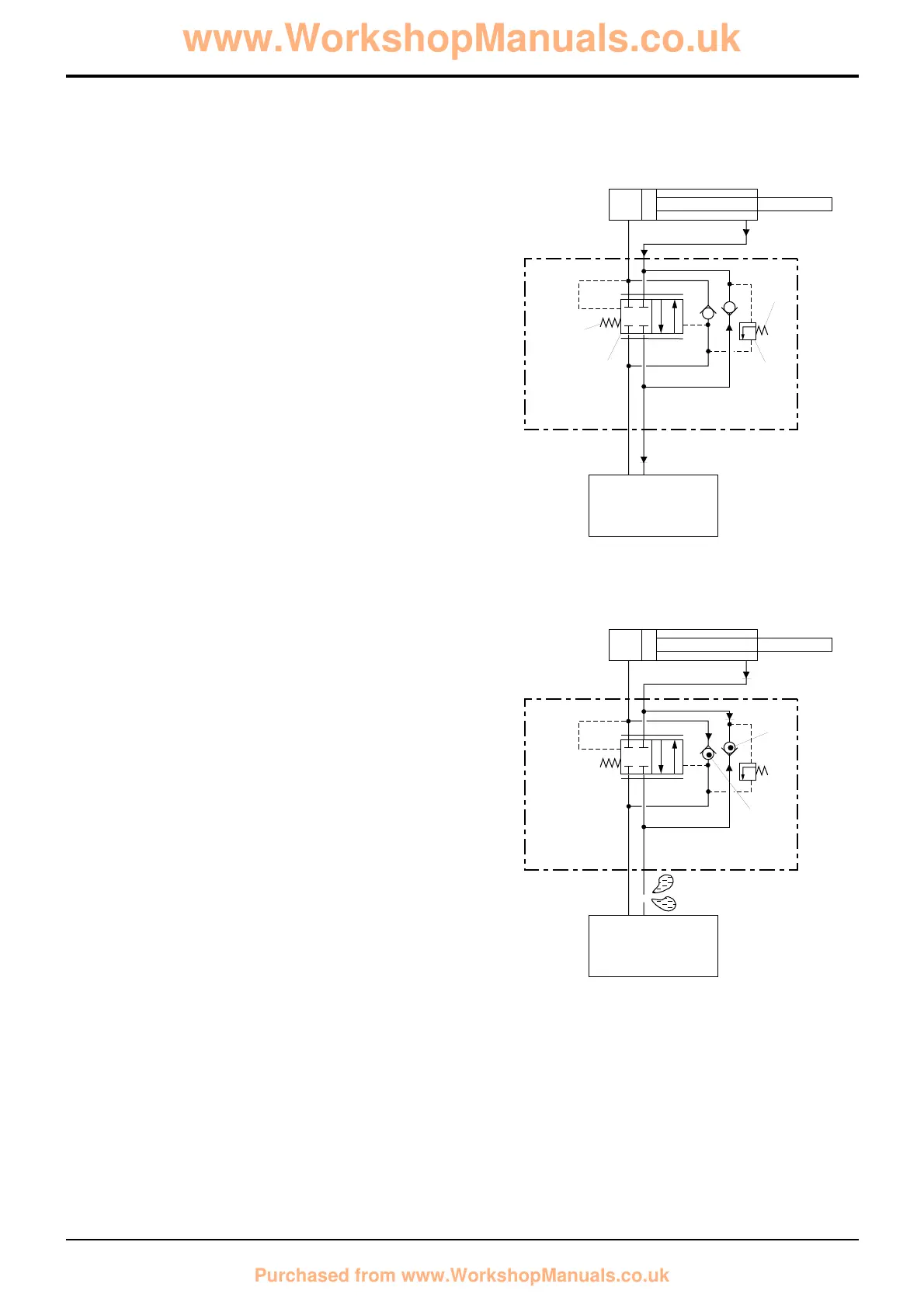11 - 4
Hose Burst Protection Valve
Boom & Dipper Operation (Cont’d)
Operation 3 - Relief Valve
If during normal operation the pressure in the rod side of the
dipper ram increases (for example, by the operation of the
bucket against an obstacle), increasing pressure in the ram
enters at port Y. The position of spool F prevents this
increasing pressure from venting back to the tank. The
pressure increases to such a point that it moves plunger K
off its seat (to the right) against the force of spring L.
The new position of plunger K opens a connection to cavity
J, the pressure is high enough to move spool F to the left
against the force of spring H. The new position of the spool
creates a connection from the rod side of the ram to port B.
Note that oil exhausted via port B will not reduce to low
pressure until the A.R.V. in the excavator valve block also
opens.
Operation 4 - Hose Burst Condition
If a burst hose or other leakage occurs in the feed to the rod
(raise) side of the ram, check valve C will be kept firmly held
on its seat by the back pressure generated due to the weight
the load in the bucket and the force of spring
D.
Oil trapped between the valve and the ram will prevent
movement of the load. To lower the load, see Lowering The
Load.
Section E
Hydraulics
9803/3280
Section E
11 - 4
Issue 1
Circuit Descriptions
Component Key:
C Check Valve
D Spring
F Spool
H Spring
J Cavity
K Plunger
L Spring

